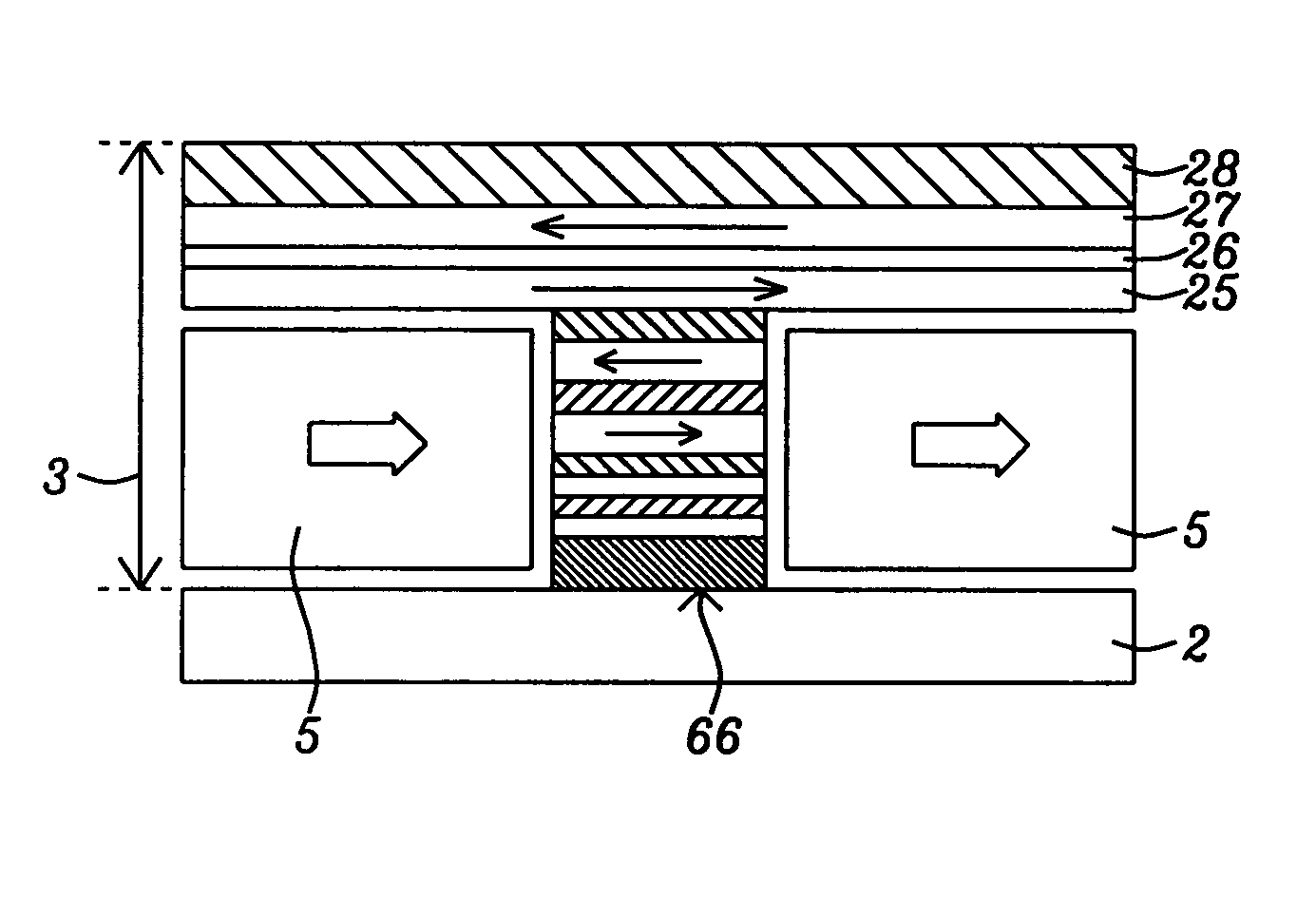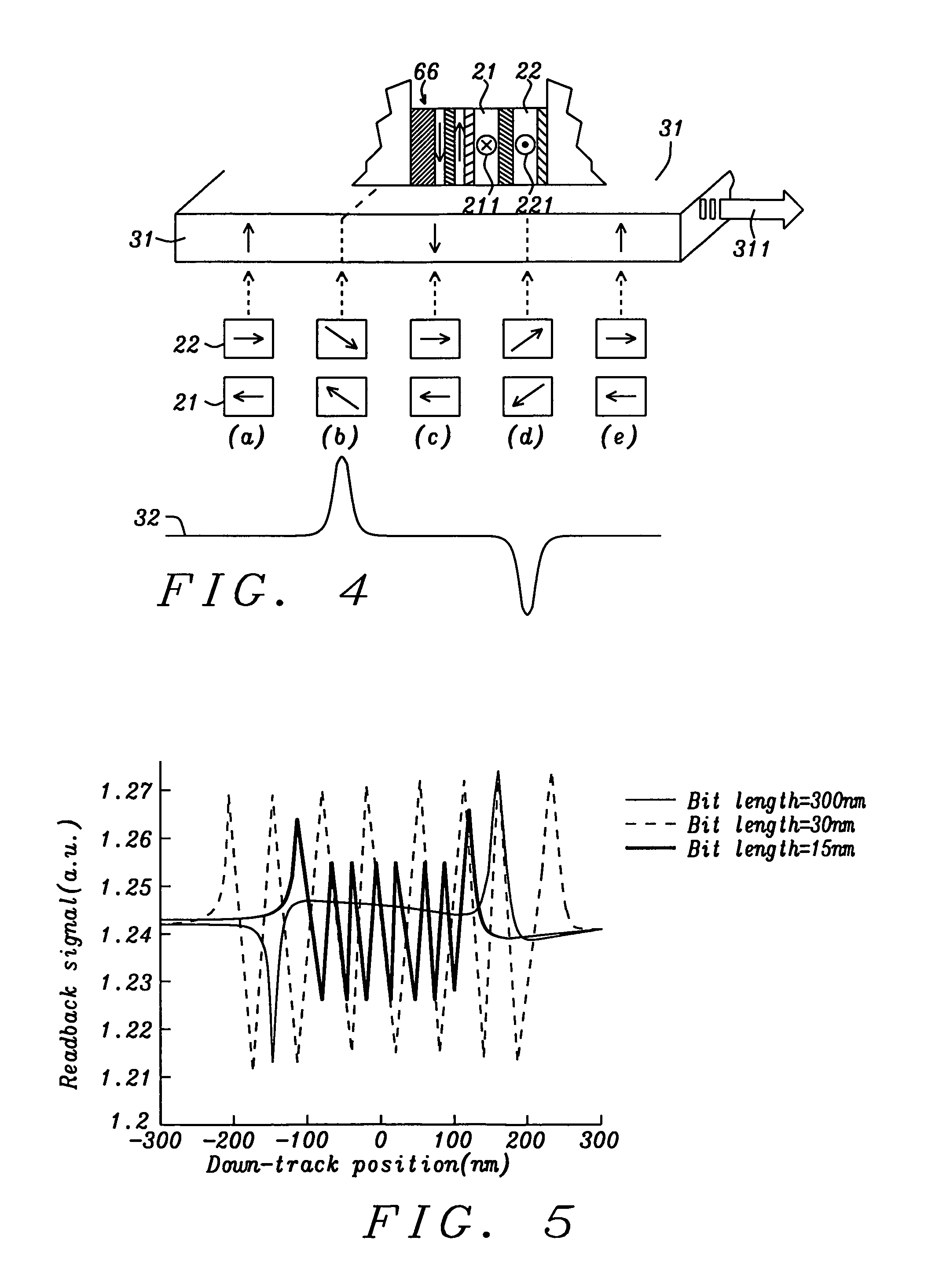High resolution magnetic read head using top exchange biasing and/or lateral hand biasing of the free layer
a magnetic read head and free layer technology, applied in the field of mr sensor fabrication, can solve the problems of less effective orientation of free layer magnetization, adversely affecting snr, and more thermal noise, and achieve the effect of improving down-track linear resolution
- Summary
- Abstract
- Description
- Claims
- Application Information
AI Technical Summary
Benefits of technology
Problems solved by technology
Method used
Image
Examples
embodiment 1
[0066]The first embodiment of the present invention has already been described above with reference to FIG. 2(A) and FIG. 2(B). Remaining embodiments 2 through 16 are described below with reference to FIG. 6 through FIG. 20 respectively. It is understood that the discussion of the effects of the top exchange biasing structure and the side hard biasing layers will apply equally well to the remaining embodiments described below. It is also understood that the processes by which each of the embodiments are formed are substantially identical, specifically with respect to the sequence of anneals in which AFM pinning (13) and pinned layers in the stack are annealed first at a high temperature and field and the top AFM pinning layer (28) of the top biasing structure is annealed last at a lower temperature and smaller field so as not to affect the first annealing results of layer (13). The HB layer is provided with its own anneal, substantially similar to the weaker field anneal of the top ...
embodiment 2
[0070]Referring now to FIG. 6, there is shown schematically a second embodiment of the present invention which is in all other aspects the same as the first embodiment illustrated schematically in FIG. 2(A) and FIG. 2(B) and described above, except that the top biasing structure, (28) and (25), that provides the exchange bias by exchange coupling to the free layer element (22) across coupling layer (24), includes only a single magnetic layer, layer (25), that is itself exchange coupled to an AFM pinning layer (28). The pinning direction of layer (28) on layer (25), is from left to right as shown by arrow (251). The formation of this embodiment, in annealing steps and patterning steps, is in all respects the same as described for embodiment 1 with the sole exception being the deposition of single layer (25) rather than the tri-layer of (25), (26) and (27) in the first embodiment.
embodiment 3
[0071]Referring now to FIG. 7, there is shown schematically a third embodiment of the present invention that is similar in all other aspects to the first embodiment, except that the MR stack, indicated as (67) (unlike stack (66) in FIG. 6) is not patterned horizontally (reduced in its width by etching) all the way down to AFM pinning layer (13) as in FIG. 2(A). Thus, the MR stack (67) of this embodiment has a uniformly narrow width encompassing the vertically stacked horizontal layers (24), (22), (23), (21) and (9), but is not horizontally patterned through layers (10), (11), (12) and (13), which retain a wider width. Subsequent to patterning, the hard biasing layers (5) are formed over the laterally extending unpatterned layers (10), (11), (12) and (13), with necessary isolation and seed layers (not indicated) between (5) and (10). Thus, the biasing layers (5) are now highly symmetrically placed relative to the SAF free layer structure and can provide similar fields to the two magn...
PUM
| Property | Measurement | Unit |
|---|---|---|
| thickness | aaaaa | aaaaa |
| thickness | aaaaa | aaaaa |
| thickness | aaaaa | aaaaa |
Abstract
Description
Claims
Application Information
 Login to View More
Login to View More - R&D
- Intellectual Property
- Life Sciences
- Materials
- Tech Scout
- Unparalleled Data Quality
- Higher Quality Content
- 60% Fewer Hallucinations
Browse by: Latest US Patents, China's latest patents, Technical Efficacy Thesaurus, Application Domain, Technology Topic, Popular Technical Reports.
© 2025 PatSnap. All rights reserved.Legal|Privacy policy|Modern Slavery Act Transparency Statement|Sitemap|About US| Contact US: help@patsnap.com



